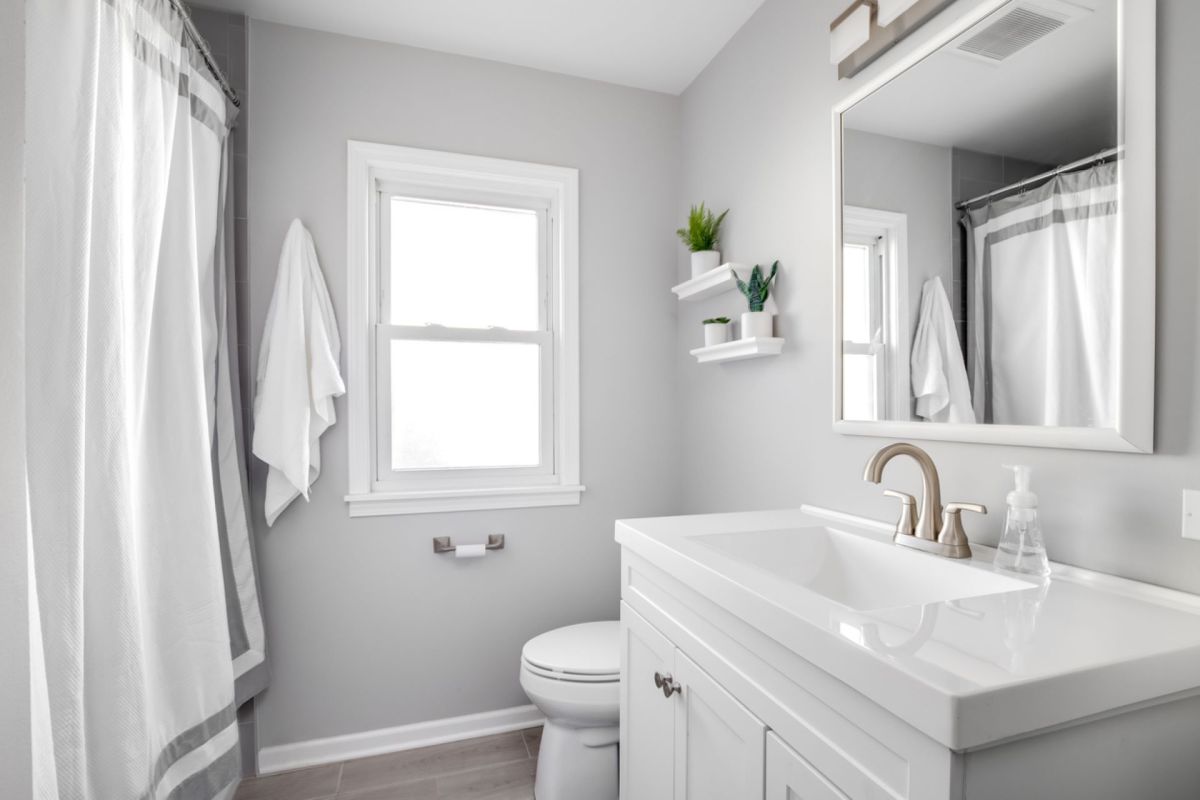We spend a lot of time in our bathrooms — up to an hour each day for the majority in one study.
So, it makes sense that we would want to treat ourselves to the best bathroom products out there. What's surprising, maybe, is that many of the best options are also the most cost-effective and sustainable choices.
With that in mind, here are three simple ways to upgrade your bathroom time — and save plenty of money in the process.
Install a bidet
Bidets have a strange reputation in the United States when they should really be considered money-saving devices. Although you'll have to pay the upfront costs of getting one, you'll start saving soon after it's installed.
Where are these savings coming from? An absurd reduction — close to 75% — in how much toilet paper you use.
The average American spends more than $180 every year on TP, according to one survey, and many bidets cost around $100 or less, meaning you'd save at least $35 in your first year, assuming the bidet reduces TP use by 75%. After 10 years (up to roughly 3,600 hours of bathroom time), you'll be ahead by roughly $1,250.
Bidets don't have to be expensive, although they certainly can be if you want to dish out the cash. Tons of bidet sprayer attachments can go for $40 to $60, according to Forbes.
Using less TP also means reducing your yearly trash output by about 35 pounds per year, keeping more trees in the ground, and more pollution out of the air. And because toilet paper requires a lot of water to produce, that's roughly 2,000 gallons of water saved for many common varieties of TP. Each bidet use only accounts for about an eighth of a gallon, meaning you could use the bidet 16,000 times before you'd start to match the water usage from the toilet paper production.
Opt for high-quality, sustainable TP
For those of us who can't wrap our heads around a bidet, we can still upgrade our boring TP while limiting the impact of our toilet paper use.
The two best options for sustainable, high-quality TPs are bamboo toilet paper and recycled toilet paper.
Bamboo is arguably superior because it's durable and requires few resources to produce — including up to 30% less water than conventional toilet paper. It's biodegradable, too, and breaks down more quickly. It's not hard to find bamboo TP, as major retailers like Costco, Target, and Amazon carry it.
As opposed to traditional options, recycled TP doesn't use unsustainable virgin pulp, meaning way fewer trees have to be chopped down in order to create it.
Sustainable toilet papers aren't always more expensive than traditional brands, but they do typically cost about $0.15 more per 100 sheets. That's only a difference of about $30 a year, which is a small price to pay for a higher-quality and more sustainable product.
For those looking for a place to start, the NRDC creates a Toilet Paper Sustainability Scorecard every year to rank TP brands on their products. In September, the group released its fifth edition of "The Issue with Tissue," ranking tons of different brands on TP products.
Upgrade to bar shampoos and conditioners
Traditional shampoos and conditioners come in bulky plastic containers filled mostly with water. And we're paying the price for it — spending more cash, using up more precious bathroom space, and throwing away much more plastic (in the U.S., about a billion units a year).
Bar shampoos and conditioners are now becoming trendy alternatives to classic plastic bottles because of their high quality and their significant cost savings.
They look like bars of soap and last nearly three times as long as traditional shampoos. Because they last so much longer, you could save nearly $70 a year by swapping both your shampoo and conditioner. And this even accounts for their higher upfront cost (it's typically between $13 and $17 per bar).
They're more convenient to travel with, as you'll be able to get them through security much more easily than liquid shampoos.
These products work with all different hair types, from curly to straight, oily to dry. One seller of bar shampoos and conditioners, Viori, has a six-question quiz to help you identify exactly what type of bar haircare product is best for you.
Join our free newsletter for easy tips to save more, waste less, and help yourself while helping the planet.









